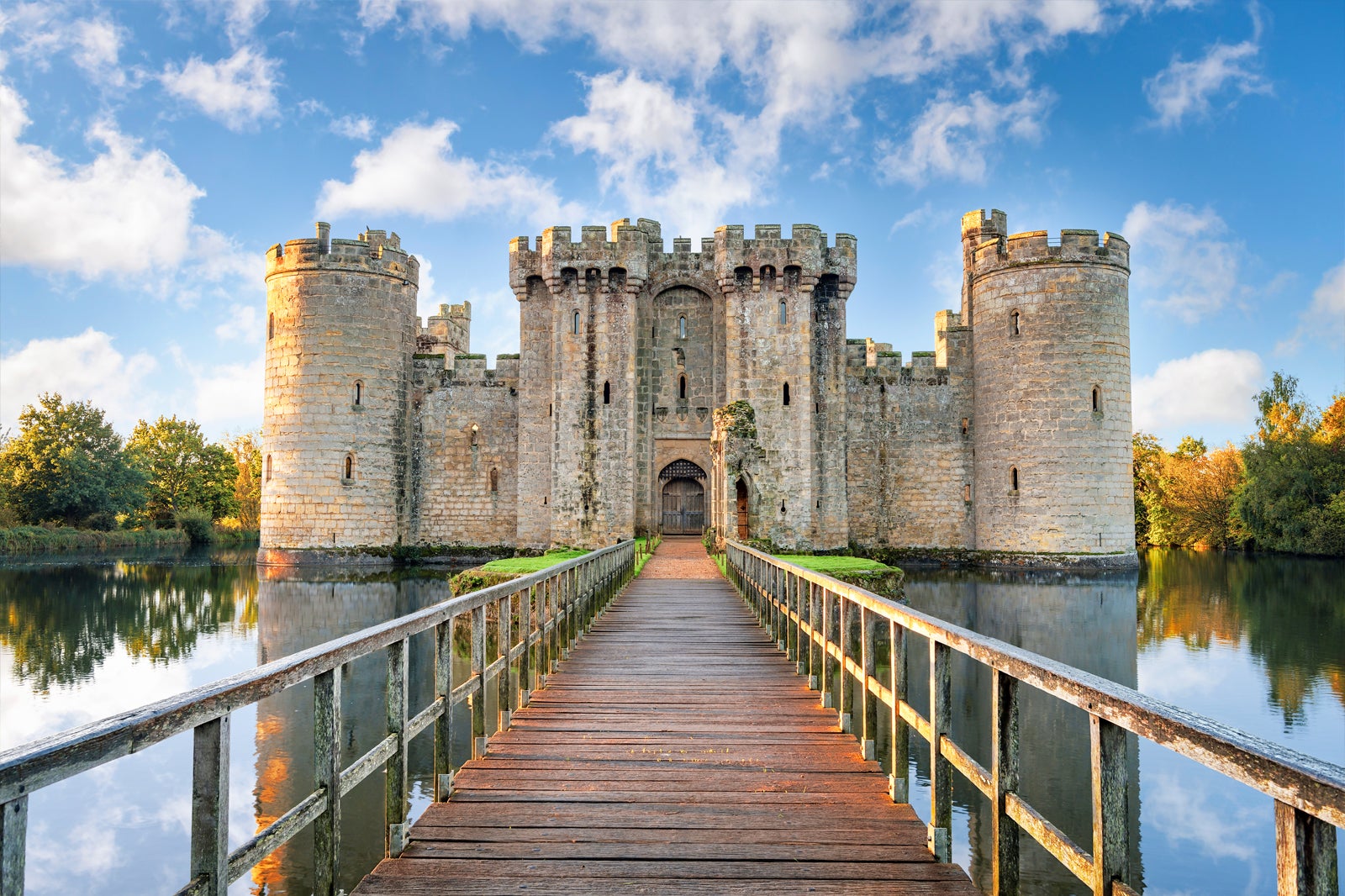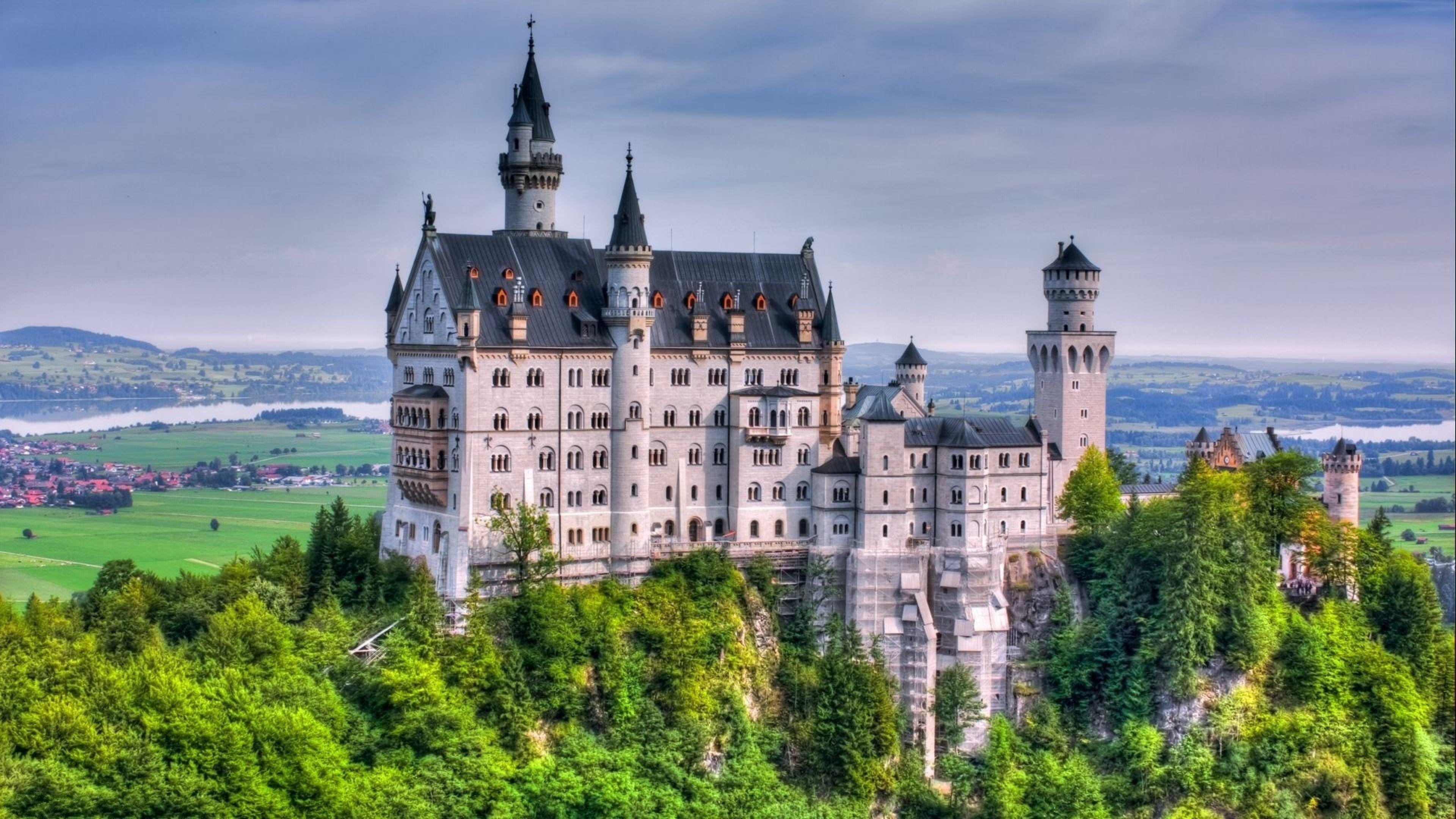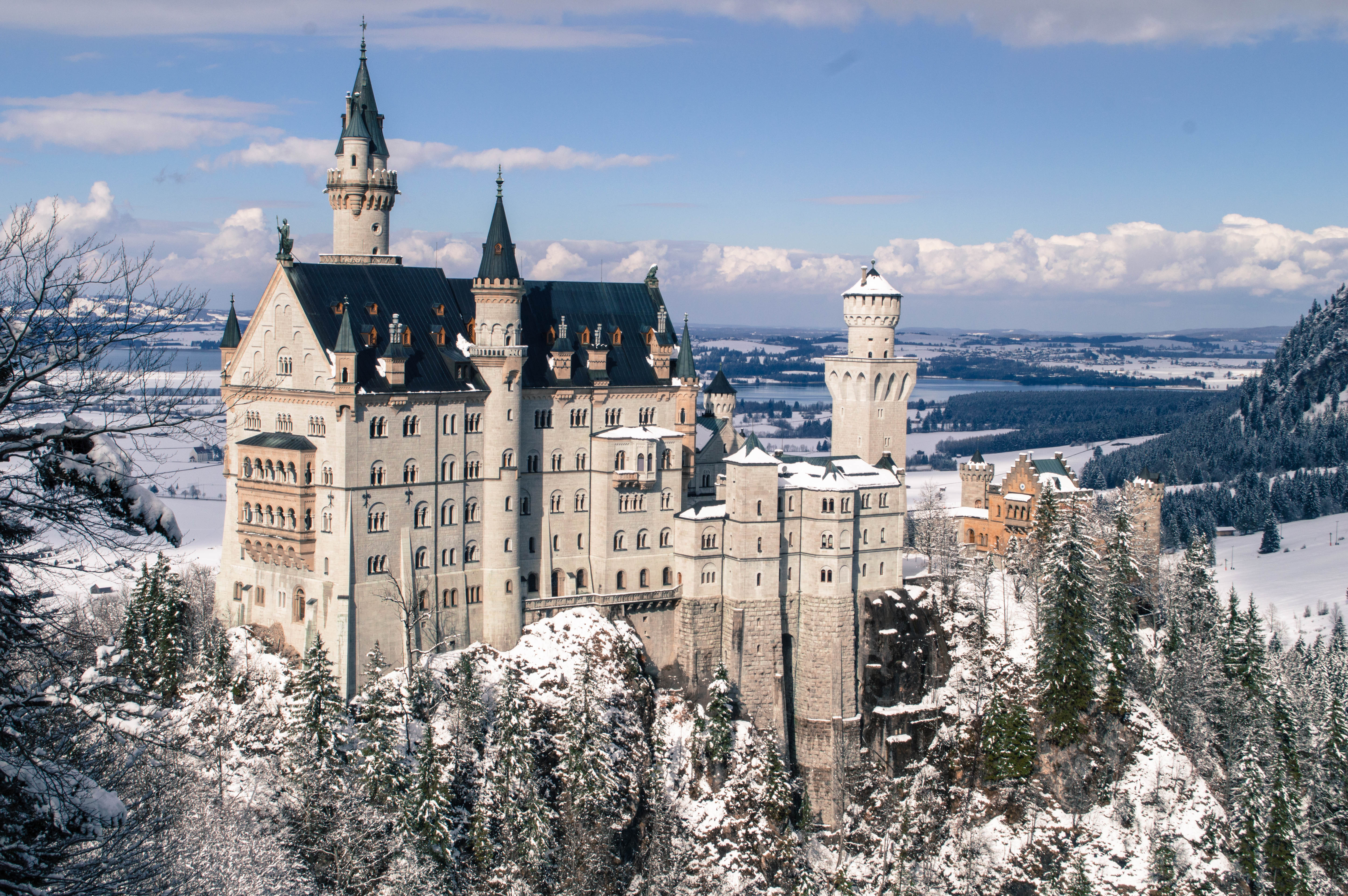Castle Lane - A Path Through Time
Imagine, if you will, a quiet stretch of road, perhaps a little winding, that seems to carry whispers from long ago. This isn't just any old road; it's a "castle lane," a pathway that might lead you to grand, ancient structures or, in a way, connect you to the many stories these impressive buildings hold. There's something quite special about places that have stood for centuries, watching generations come and go, and our journey along this particular lane starts with some rather striking moments from the past.
The history tied to such places can be quite stark, really, like the events that took place at Sterling Castle. It's a place where, as records show, people were once put to death in a very public and brutal manner, a practice known as being drawn and quartered. This happened at Sterling Castle, a reminder of the sometimes harsh realities of earlier times. It tells us, quite honestly, that these old stones have witnessed a great deal, both good and, you know, very bad.
Yet, the story of these historic spots isn't just about hardship. It also includes tales of honor, of recognition, and of people working to keep these pieces of the past alive. We'll explore how old traditions, like special badges given by kings, still speak to us today, and how folks in our own time are finding new ways to care for these aged buildings. It's all part of what makes walking down a "castle lane" such an interesting experience, a look back at what was and what continues to be.
Table of Contents
- What Stories Does a Castle Lane Tell?
- How Does History Shape Our Castle Lane?
- Preserving the Past - A Castle Lane's Future
- Who Keeps the Castle Lane Spirit Alive?
What Stories Does a Castle Lane Tell?
When you consider a place like Sterling Castle, it's more than just a collection of old walls. It’s a place where history really came to life, sometimes in ways that are hard to imagine now. The mention of people being drawn and quartered there, as a matter of fact, speaks to a time when punishments were very severe, often carried out in public for all to see. This kind of event, while unsettling to think about, tells us a lot about the power held by those in charge and the way justice was dealt with centuries ago.
Such happenings weren't just random acts; they were, in some respects, part of the fabric of society, showing the absolute authority of the ruling figures. A "castle lane" leading to such a place would have seen many people pass by, perhaps witnessing these very public displays. It makes you think about the lives lived then, and how different things were. The castle itself, therefore, wasn't just a home for kings and queens; it was also a place where decisions about life and death were made, influencing the lives of countless individuals.
The very stones of Sterling Castle, you know, seem to hold onto these old memories. They stand as a silent witness to a past that was often harsh, yet also full of grand ambitions and struggles for power. Walking along a "castle lane" near such a site is, in a way, like stepping back through time, allowing you to sense the weight of those earlier days. It gives you a feeling for the kinds of situations that shaped nations and the lives of the people who lived within their borders.
Echoes of the Past on a Castle Lane
The stories don't stop with the dramatic events. They also include the symbols and honors that were so important to people long ago. Think about the Robertson crest badge, for example. This wasn't just a pretty picture; it was a powerful sign of family identity and status. It showed a right hand holding an imperial crown, a clear mark of importance and loyalty.
This particular badge was given a special recognition by King James II to the fourth chief of the Robertson clan on August 15, 1451. That's a very long time ago, isn't it? This gift from a king was a huge deal, a way to show favor and to strengthen the ties between the royal family and powerful clan leaders. It meant that the Robertsons were seen as trustworthy and important figures in the kingdom.
Such a crest, then, is more than just a piece of art; it's a historical document in its own right, telling us about relationships and power structures from centuries past. It speaks to a time when symbols held a lot of meaning, and a "castle lane" would have been a path where people proudly displayed such marks of their heritage. It reminds us that even small details can hold big stories about the way things used to be.
How Does History Shape Our Castle Lane?
The past, you see, isn't just something that happened and then went away. It shapes the present in many ways, influencing how we view and interact with these old structures. The stories of kings, battles, and symbols, like that Robertson crest, contribute to the deep sense of history that surrounds a "castle lane." These historical elements aren't just dry facts; they are threads that connect us to the people who walked these paths before us, giving a special character to the very ground we stand on.
Consider how a king's decision, made so many hundreds of years ago, can still be talked about today. That royal gift of the crest badge, for instance, created a lasting legacy for a family, a mark of honor that has been passed down through generations. This kind of historical continuity gives a "castle lane" a depth that a newer road simply doesn't have. It's almost like the air itself holds the echoes of those past events, making any visit to such a place feel like a journey through time.
So, the history of a place, whether it's the grand events or the smaller, more personal ones, gives it its unique spirit. It's why people are drawn to these sites, why they feel a connection to something much bigger than themselves. The path that makes up a "castle lane" isn't just a way to get from one point to another; it's a route through the collective memory of a region, a place where the past is always, in a way, present.
A Royal Gift and the Castle Lane
The story of the Robertson crest badge is a pretty good example of how deeply history can be woven into the fabric of a place. King James II, a powerful figure of his time, gave this special mark of honor to the fourth chief of the Robertson clan. This wasn't just a simple present; it was a formal recognition, a sign of trust and alliance, given on a specific date, August 15, 1451. That date, you know, makes it very real.
Such an award, featuring a right hand holding an imperial crown, spoke volumes about the status of the clan and their connection to the monarchy. It meant they were seen as important, perhaps even as protectors of the king's interests. This kind of relationship between a king and his chiefs was absolutely crucial for maintaining order and power in the kingdom. It helped to define who was who, and where everyone stood in the social order of the time.
The existence of such a badge, still recognized today, shows how symbols from the past continue to hold meaning. It's a piece of living history, a tangible link to a time when kings ruled and clans held sway. For anyone exploring a "castle lane," understanding these kinds of historical details adds a richness to the experience, helping them appreciate the long and often complicated story of the land and its people.
Preserving the Past - A Castle Lane's Future
While we look back at history, there's also the very real challenge of keeping these old structures from falling apart. Many castles, over the centuries, have become ruins, standing as beautiful but fragile reminders of what once was. The idea of converting a ruined castle, as reported in The Daily Telegraph on May 28, 2005, is a good example of how people are trying to give these old places a new lease on life.
This particular owner, after more than two decades of trying to save the building, came up with a creative solution. Imagine fighting for twenty years to keep something from completely crumbling away! That's a lot of dedication, isn't it? It shows a deep care for history and a desire to make sure these important landmarks don't just disappear. The concept of converting a ruin means finding a new purpose for it, allowing it to continue to exist in a different form.
This effort to save and adapt old castles is a big part of their future. It's about finding a balance between respecting their past and making them useful for today. A "castle lane" might lead you to one of these places, where the old stones are being carefully worked on, given a new breath. It's a hopeful sign that even the most damaged historical sites can find a way to stay relevant and cherished.
The Modern Castle Lane Dilemma
The challenge of what to do with an old, perhaps ruined, castle is a pretty common one. These buildings are often very large, and keeping them up costs a lot of money and takes a great deal of effort. The story from The Daily Telegraph, from 2005, really highlights this. An owner had been fighting for over twenty years to protect a castle that was falling apart, which, honestly, sounds like a huge undertaking.
The idea of converting it, then, is a practical step. It's about finding a way for the castle to pay for its own upkeep, perhaps by turning it into a hotel, apartments, or a public space. This approach helps to preserve the physical structure while also giving it a new reason to exist in the modern world. It's a way of making sure that the history isn't lost, but rather, that it continues to be a part of our lives, just in a different way.
So, a "castle lane" might not just lead to perfectly preserved historical sites. It could also take you to places where the past and present are actively meeting, where old stones are being given a fresh start. This ongoing work of preservation and adaptation is a really important part of keeping our historical heritage alive for future generations to appreciate and learn from.
Who Keeps the Castle Lane Spirit Alive?
It's not just owners and historical societies who care about these old places. There are many individuals and groups who feel a strong connection to castles and their stories. The mentions of "Megan and Ralph, Craftworks, Inc" and "AJR castle enthusiast" point to the everyday people who are drawn to these ancient structures and find ways to celebrate them, perhaps through creative work or simply through a deep personal interest.
"Craftworks, Inc" suggests a business that might create items inspired by castles, or perhaps even work on restoring parts of them. This shows how historical interest can turn into something practical and artistic. And someone described as a "castle enthusiast," like AJR, is simply someone who loves castles, perhaps studying their history, visiting them often, or even collecting things related to them. These are the people who keep the passion for castles burning brightly.
These individual efforts and community groups are, in a way, the guardians of the "castle lane" spirit. They ensure that the stories and the beauty of these old buildings continue to be appreciated and shared, not just by historians, but by everyone. Their interest helps to keep these places relevant, making sure that the past isn't forgotten but remains a vibrant part of our collective imagination.
Enthusiasts and the Castle Lane Today
The fact that there are people like Megan and Ralph, working with something called "Craftworks, Inc," and individuals like AJR, who is clearly a "castle enthusiast," shows that the appeal of these old buildings is still very much alive. These are the folks who, in a way, walk the "castle lane" every day, even if they're not physically at a castle. Their interest keeps the stories and the magic of these places going.
Someone who is a "castle enthusiast," for instance, might spend their time researching old castle facts, visiting different sites, or even joining groups that talk about castle history. It's a real passion, and it helps to keep the interest in these historical sites alive for everyone. They might share their knowledge online, perhaps through platforms like "Invision Community," which is mentioned in the original text, allowing others to learn and connect over their shared love of castles.
These modern connections, whether through crafts or online communities, show that castles are not just relics of the past. They are still inspiring people today, prompting creativity and a desire to learn more about history. So, the "castle lane" isn't just a path to a physical building; it's also a path that connects people who share a common fascination with these magnificent, enduring structures.
This article has explored the many facets of "castle lane," from the stark historical events at Sterling Castle, including the drawing and quartering, to the significant award of the Robertson crest badge by King James II in 1451. It also looked at modern efforts to preserve these ancient structures, such as the idea of converting a ruined castle, as reported in The Daily Telegraph in 2005, and acknowledged the role of enthusiasts like Megan and Ralph from Craftworks, Inc, and AJR, who keep the spirit of castles alive today.

12 Most Beautiful Castles in the UK - Must-See Castles in the United

Beautiful Castles Wallpapers - Top Free Beautiful Castles Backgrounds

Where is the Disney Castle in Germany? A Guide to Visiting